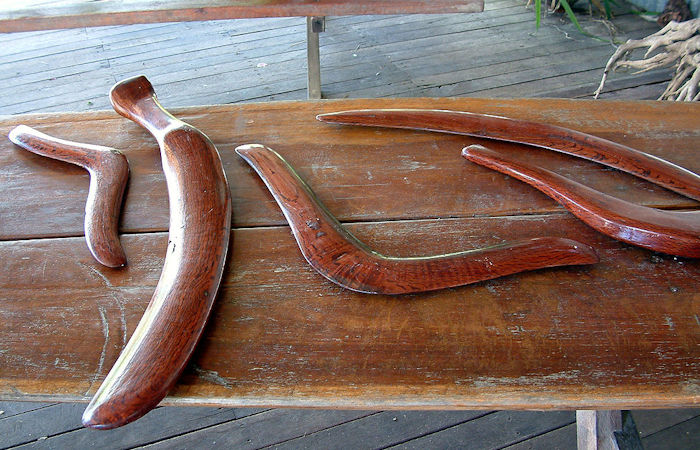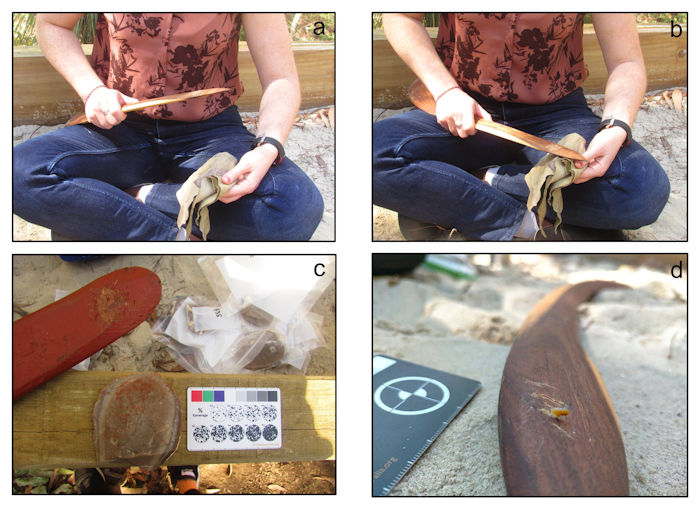Jan Bartek – AncientPages.com – A new study into the multipurpose uses of boomerangs has highlighted how the hardwood objects were used to shape the edges of stone tools used by Australian Indigenous communities.
The research, published in PLOS ONE, demonstrated how boomerangs could function as lithic (or stone) tool retouchers by investigating the use-wear generated on the boomerangs’ surfaces during retouching activities.

Australian Aboriginal boomerangs. Credit: Media Viewer – CC BY-SA 1.0
It was found that these use-wear impacts on boomerangs were comparable to those observed on Paleolithic bone retouching tools, which date back to more than 200,000 years ago.
The research adds to a previous study into boomerang uses led by the same team from Griffith University’s Australian Research Centre for Human Evolution, but also highlights the broader topic of the multipurpose application of many Indigenous tools throughout Australia.
Ph.D. Candidate Eva Francesca Martellotta said the study revealed a deep functional connection between bone and wooden objects—a topic rarely investigated in archaeological contexts.
“Studying the shaping techniques applied to stone tools is crucial to understand our past,” Martellotta said.
“Thinking in modern terms, it is like understanding the difference between a butcher knife and a bread knife: their blades have different shapes—one straight, the other serrated—because they are used to cut different materials. That is, to perform different functions.”
“Australian boomerangs are mainly used as hunting and fighting weapons. However, they also have many other functions, linked to the daily activities of Aboriginal communities.”
“In our article, we put together traditional knowledge and experimental archaeology to investigate a forgotten use of boomerangs: modifying the edges of stone tools.”

Retouching using boomerangs. Credit: Griffith University
“This activity is fundamental to producing a variety of stone implements, each of them with one or more functions.”
“Traditionally handcrafted experimental replicas of boomerangs proved very functional to shape stone tools.”
“Our results are the first scientific proof of the multipurpose nature of these iconic objects.”
See also: More Archaeology News
Study co-author Paul Craft, a Birrunburra / Bundjalung / Yugambeh / Yuggera / Turrbal man, contributed two of the four hardwood boomerangs used for the lithic tool knapping (shaping) experiments, which were performed in the Griffith Experimental Archaeology Research Lab located outdoors at the Nathan campus.
The study was published in the journal PLoS ONE
Written by Jan Bartek – AncientPages.com Staff Writer





